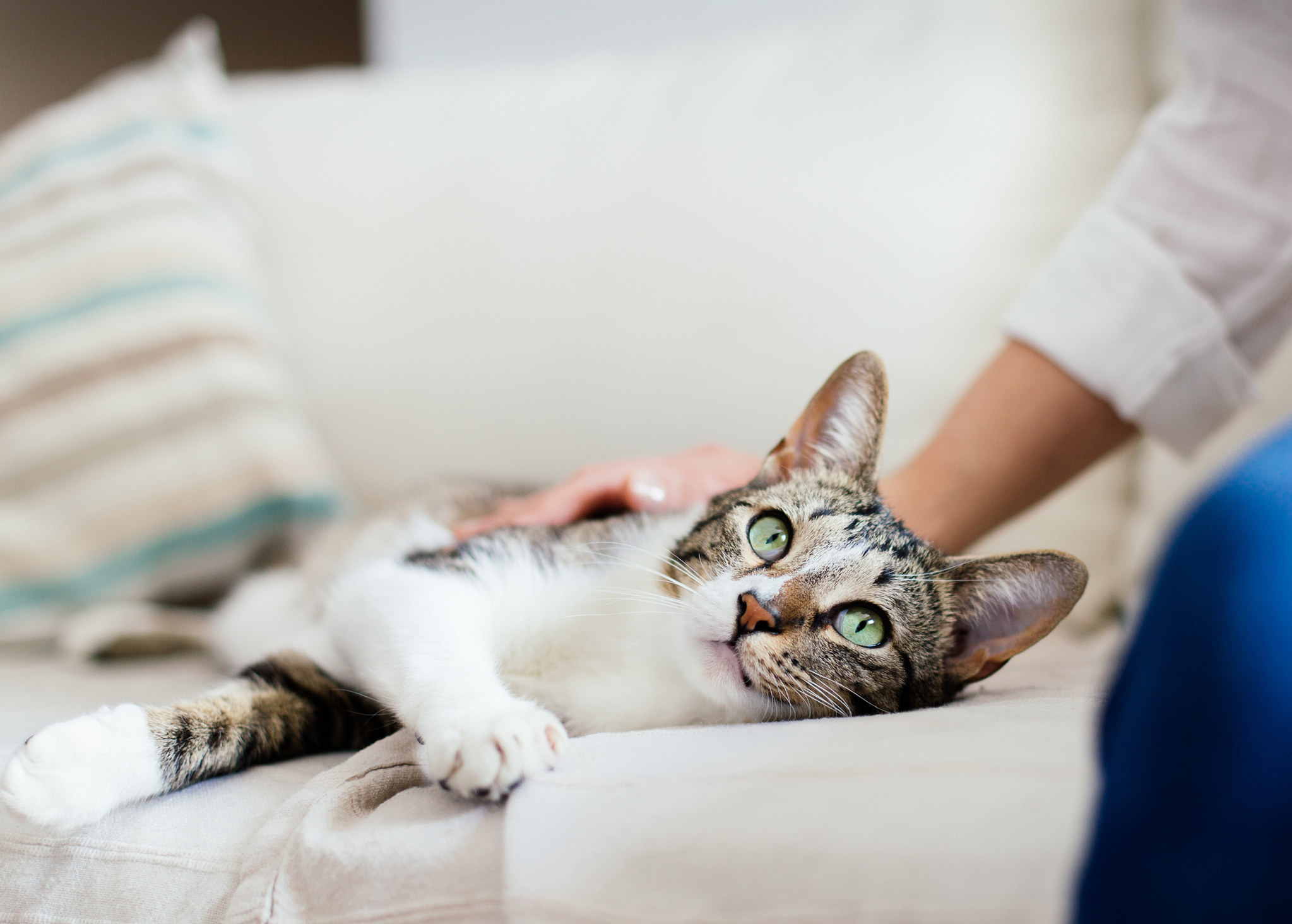Persian cats can experience several health issues including eye problems, respiratory problems, kidney disease, obesity, dental problems, polycystic kidney disease, and ringworm. These issues can cause symptoms such as excessive tearing, difficulty breathing, frequent urination, weight gain, bad breath, kidney function decline, and skin lesions.
Treatment for these health issues ranges from eye drops and prescription medications to surgeries for kidney disease and dental procedures for dental problems. It is crucial for Persian cat owners to monitor their cat’s health closely and seek veterinary care promptly to ensure the well-being of their furry friends.
Contents
- 1 Persian Cat Health Issues: An Overview
- 2 1. Feline Upper Respiratory Infections
- 3 2. Polycystic Kidney Disease (pkd)
- 4 3. Hypertrophic Cardiomyopathy (hcm)
- 5 4. Dental Problems In Persian Cats
- 6 5. Feline Lower Urinary Tract Disease (flutd)
- 7 6. Obesity In Persian Cats
- 8 7. Allergic Skin Conditions
- 9 Frequently Asked Questions For 7 Persian Cat Health Issues: Symptoms, Causes, And Treatment
- 10 Conclusion
Persian Cat Health Issues: An Overview
Persian cats are beautiful and elegant breeds with unique health concerns that owners should be aware of. These cats are prone to several health issues that may require prompt attention. Below is a brief overview of common Persian cat health issues:
| Health Issue | Symptoms | Causes | Treatment |
|---|---|---|---|
| Persian Upper Respiratory Problems | Nasal discharge, sneezing, congestion | Viral infections, allergies | Treatment depends on the cause, may include medications and supportive care |
| Polycystic Kidney Disease (PKD) | Increased thirst, frequent urination, weight loss | Genetic predisposition | Management of symptoms, fluid therapy, special diet |
| Eye Problems | Excessive tearing, eye discharge, squinting | Entropion, cherry eye, conjunctivitis | Medications, surgery in some cases |
| Dental Issues | Bad breath, loss of appetite, tooth discoloration | Poor oral hygiene, tooth decay | Dental cleaning, extractions, proper oral care |
| Obesity | Excessive weight gain, difficulty in mobility | Inadequate exercise, overfeeding | Dietary changes, regular exercise |
| Heat Sensitivity | Rapid breathing, panting, discomfort in hot weather | Breed predisposition | Keeping cool, providing shade and fresh water |
| Persian Cat Skin Issues | Itching, hair loss, skin infections | Allergies, poor grooming | Identifying and treating underlying cause, medications, regular grooming |
It’s important to monitor your Persian cat’s health closely and seek veterinary care if you notice any unusual symptoms. Regular check-ups and proper care can help prevent and manage these health issues effectively.
1. Feline Upper Respiratory Infections
Upper respiratory infections can be quite common in Persian cats and are often marked by a range of signs and symptoms. Sneezing, coughing, congestion, runny nose, and sore throat are all indicators of such infections. Cats may also display lethargy, loss of appetite, and fever. These infections are primarily caused by viruses such as feline herpesvirus and calicivirus, as well as bacteria such as Bordetella bronchiseptica. Treatment for respiratory infections in Persian cats includes antibiotics to combat bacterial infections and antiviral medications to address viral causes. Additionally, supportive care such as fluid therapy, nutritional support, and warm steam inhalations can help alleviate symptoms and aid the recovery process. It’s essential to promptly seek veterinary attention for respiratory infection symptoms in Persian cats to ensure proper diagnosis and timely treatment, minimizing any potential complications.
2. Polycystic Kidney Disease (pkd)
Polycystic Kidney Disease (PKD)
PKD is a common genetic disorder that affects Persian cats. It is characterized by the development of cysts in the kidneys. These cysts can gradually enlarge, causing the kidneys to lose their function over time. PKD in Persian cats is primarily inherited, with specific genetic mutations being responsible for the development of the disease.
Understanding PKD in Persian cats
Genetic factors and inheritance: Persian cats with PKD inherit the disease from their parents. It is important to note that not all Persian cats with the gene mutation will develop the disease, as the severity of PKD can vary between individuals.
Diagnosis and management of PKD: Veterinarians can diagnose PKD in Persian cats through ultrasound imaging. Regular check-ups and monitoring of kidney function are essential for managing the disease. Medications and dietary modifications may be recommended to slow down the progression of the disease and alleviate symptoms.
3. Hypertrophic Cardiomyopathy (hcm)
Hypertrophic Cardiomyopathy (HCM) is one of the 7 Persian cat health issues that can result in thickened heart muscles, causing symptoms like difficulty breathing, lethargy, and poor appetite. Treatment typically involves medication and lifestyle changes to improve the cat’s heart function and overall health.
The prevalence of HCM in Persian cats: Persian cats are prone to developing hypertrophic cardiomyopathy (HCM), a heart disease characterized by thickening of the heart muscles. HCM is prevalent among Persian cats due to genetic factors. It is estimated that around 25-30% of Persian cats are affected by this condition.
Common symptoms and complications: Signs of HCM in Persian cats may vary, but common symptoms include difficulty breathing, rapid breathing, lethargy, and coughing. HCM can lead to serious complications such as heart failure, blood clots, and sudden death.
Treatment and preventive measures: While there is no cure for HCM, treatment focuses on managing the symptoms and slowing the progression of the disease. Medications such as beta-blockers, ACE inhibitors, and diuretics may be prescribed. Regular veterinary check-ups are crucial to monitor the cat’s condition. Preventive measures include avoiding breeding cats with a family history of HCM and adopting a healthy lifestyle for the cat, including a balanced diet and regular exercise.
4. Dental Problems In Persian Cats
Having good oral health is crucial for Persian cats, as they are prone to various dental issues. One common dental problem specific to Persian cats is dental malocclusion, which refers to misalignment of the teeth and jaws. This can result in discomfort and difficulty in eating.
Symptoms of dental problems in Persian cats include bad breath, excessive drooling, swollen gums, reluctance to eat, and pawing at the mouth. If you notice any of these signs, it is important to seek veterinary care.
To prevent dental problems, regular dental care and maintenance are essential. Brushing your Persian cat’s teeth regularly can help remove plaque and tartar. You can also provide dental treats and toys specifically designed to promote oral health. Additionally, regular veterinary check-ups are important to identify and treat any dental issues early on.
5. Feline Lower Urinary Tract Disease (flutd)
One common health issue that Persian cats may face is Feline Lower Urinary Tract Disease (FLUTD). FLUTD can have a significant impact on the well-being of these cats. The signs of FLUTD include frequent urination, difficulty urinating, blood in the urine, and urinating outside the litter box. Numerous factors can contribute to FLUTD, including stress, infections, bladder stones, and even certain diets.
Management and treatment options for FLUTD in Persian cats may include providing a stress-free environment, ensuring proper hydration, and feeding a balanced diet specifically designed for urinary health. Veterinary intervention may also be necessary, which could involve medications to alleviate symptoms, as well as surgical procedures to remove bladder stones in severe cases.
With proper care and attention, Persian cat owners can help mitigate the impact of FLUTD on their beloved pets’ health and ensure a better quality of life for their furry companions.
6. Obesity In Persian Cats
The obesity rate in Persian cats has been on the rise due to various factors. One of the primary contributing factors is a sedentary lifestyle. Persian cats are known for being less active compared to other breeds, which makes them more prone to weight gain. Additionally, overfeeding and a lack of portion control can also lead to obesity in these cats. Obesity can have serious health implications, including an increased risk of diabetes, heart disease, and joint problems. Therefore, it is crucial to manage their weight effectively. One approach is to provide a balanced and portion-controlled diet. Ensuring regular exercise through interactive play sessions or using toys can also help them stay active. Monitoring their weight regularly and consulting a veterinarian for a customized weight management plan is essential for keeping Persian cats healthy and fit.
7. Allergic Skin Conditions
Allergic Skin Conditions:Common skin allergies can be a major health issue in Persian cats. It is important to recognize the symptoms and identify the triggers for effective treatment and prevention. Some common symptoms of allergic skin conditions include itching, redness, inflammation, hair loss, and skin infections. Persian cats are prone to allergies caused by environmental factors like pollen, dust mites, and mold, as well as certain food ingredients.
To determine the triggers, it is recommended to keep a diary of your cat’s symptoms and track any changes in their environment and diet. This can help identify the specific allergens causing the reactions. Avoiding the allergens is the key to managing allergies in Persian cats. This may involve making changes to their diet, using hypoallergenic bedding, regular cleaning, and minimizing exposure to environmental triggers.
Treatment approaches can include antihistamines, corticosteroids, and immune-modulating medications to alleviate the symptoms. Additionally, regular grooming and bathing can help remove allergens from their coat and skin. Preventive measures like maintaining a clean environment, good ventilation, and a balanced diet can also contribute to reducing the frequency and severity of allergic reactions in Persian cats.

Credit: www.thevetconnection.co.uk
Frequently Asked Questions For 7 Persian Cat Health Issues: Symptoms, Causes, And Treatment
What Are The Most Common Health Problems For Persian Cats?
Common health problems for Persian cats include respiratory issues, such as brachycephalic airway syndrome, eye problems like entropion, and polycystic kidney disease. Additionally, they may suffer from dental problems and obesity. Regular health check-ups and proper grooming can help prevent these issues.
What Are The Symptoms Of Persian Cat Health Problems?
Persian cats may experience various health problems, including eye infections, respiratory issues, and excessive tearing. They are also prone to dental diseases and kidney problems. Regular vet check-ups and a balanced diet can help keep them healthy.
What Is The Most Common Cause Of Death In Persian Cats?
The most common cause of death in Persian cats is polycystic kidney disease (PKD).
How Do You Treat A Persian Cat?
To treat a Persian cat, groom its long and thick fur daily to prevent mats. This breed is prone to eye and respiratory issues, so clean its eyes regularly and keep the environment smoke-free. Provide a balanced diet, fresh water, and regular vet check-ups.
Conclusion
Being aware of common Persian cat health issues is crucial for their well-being. By recognizing the symptoms, understanding the causes, and seeking appropriate treatment, we can provide the necessary care to ensure their health and happiness. Remember to consult with a veterinarian for reliable advice and guidance specific to your Persian cat’s needs.
With proactive measures and regular check-ups, we can help our furry friends lead long and healthy lives.

Katie Lindsey is a passionate cat lover and founder of Cats Solution, a comprehensive resource for all things feline. With a lifelong love for cats and extensive knowledge in their care and behavior, she provides expert advice and solutions to cat owners. Through her website, Katie fosters a supportive community where cat enthusiasts can find guidance and heartwarming stories. A dedicated advocate for animal welfare, Katie also promotes responsible pet ownership and adoption. Join her on this purr-fect journey celebrating the joy of feline companionship.



